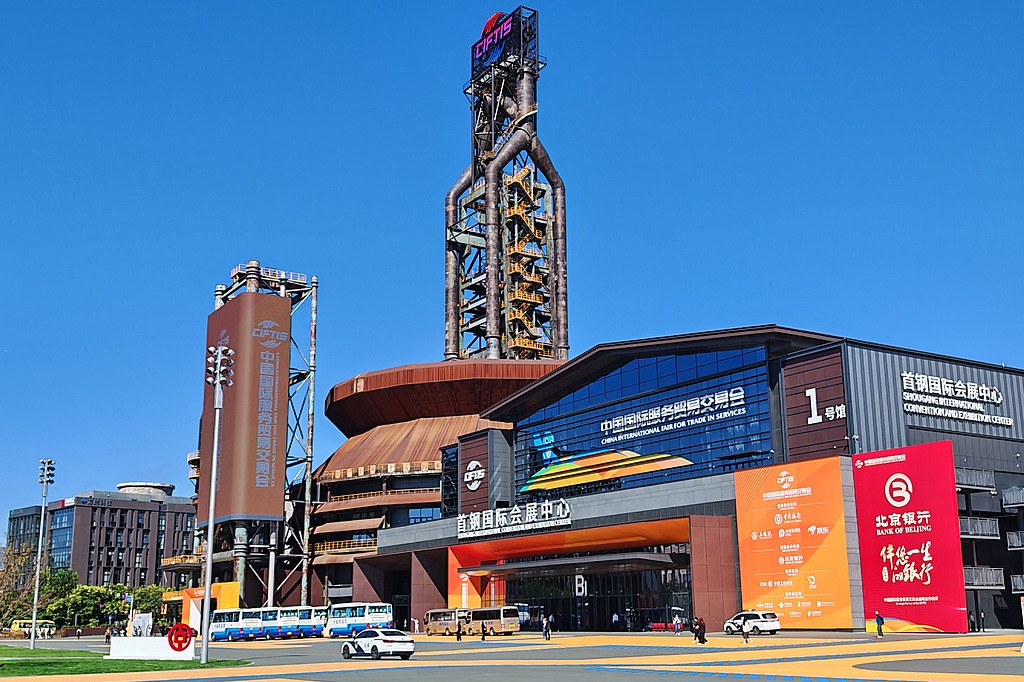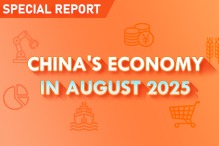Long-term targets essential for stabilizing policies


The problems that China's economy now faces are as per expectations and are also obstacles that must be overcome when the country undergoes the transformation from rapid growth to high-quality economic growth.
Serving as the major economic stimuli over the past decades, property and infrastructure investments have exceeded expectations in terms of economic development. Of course, they will continue to play their roles, but conventional economic drivers as these have seen their utility contract marginally.
The better-than-expected exports last year have significantly supported economic recovery from the COVID-19 pandemic. But export growth will slow this year as supply chains gradually recover overseas. The fact is, even if supply chains are sustainable, the slowdown of China's export growth is a sure thing, given the changing global growth dimensions, which will influence the country's potential GDP.
On the other hand, domestic demand should be further explored as China attaches more importance to high-quality development, with more stress laid on consumption and innovation.
Therefore, the obstacle China needs to address now is the incompatibility between the slowdowns in real estate, infrastructure and exports and the potential for consumption and innovation to drive growth forward. The challenge is not about whether we should surmount this obstacle but rather how and when we will overcome it.
In the near term, stabilizing economic growth is crucial to avoiding any slumps in major economic readings. But a long-term target should be set for stabilizing policies so that China can make the transformation smoothly.
The world's growth engines have changed significantly. Developed countries used to drive global economic growth for a very long time, which was mainly because of the huge disparity between high-income nations and low-income nations. Globalization helped shape the scenario under which developed economies consumed and developing economies manufactured.
But data from the United Nations showed that mid- to high-income nations took up 34 percent of the world's population in 2019, up from 11.5 percent in 1980. The development capability of these countries and regions will determine overall global growth potential. The downward global economic pressure we see at present is not completely caused by COVID-19. It will continue to exist by simply relying on developed economies even without the impact of the pandemic.
There is also downward pressure on global growth efficiency. Data from the developed countries over the past four decades showed that growth efficiency declined after each recession. Developed countries' total factor productivity contracted by 3 to 4 percent in the three to five years after each major recession.
Theoretically, economic crisis is the process during which low-efficiency assets and companies are eliminated. Efficiency should be elevated after each crisis, ushering in a new round of economic recovery and growth. But this is only theory.
Past experiences show that resources in high-efficiency companies were reallocated to low-efficiency ones during crises, which lowered overall efficiency. This was closely related to all kinds of stimulative policies.
So it can be concluded that with efficiency a slow variable and a long-term indicator, when the COVID-19 pandemic ends, there will be long-lasting impacts on efficiency, which will ultimately harm the overall economic potential. Just like the declines seen in GDP growth rate in the United States after each crisis since World War II.
We can thus infer that pursuing high-quality development is actually pursuing efficiency. The competition between China and the US in the future will be centered on efficiency. It has also proved that growth stability weighs as much as growth quality.
Stagnancy in emerging markets and inflation in developed economies will continue. The inflation in the US may be more serious than market expectations, which can be partly validated by the rising commodity prices and wage inflation. The US Federal Reserve's monetary policy has lagged behind the market curve, which makes it more difficult to curb inflation.
As a result, close attention should be paid to the tightening process of US monetary policy. When developed economies cope with excess market liquidity, emerging markets will have to grapple with excess capacity at the same time, unless the mid- to high-income emerging economies can generate new demand to digest such excess capacity.
The Fed's tightening monetary policy usually leads to a tightened credit environment. Past experiences show that its monetary cycle is 18 months ahead of the credit cycle. The Fed started to trim its asset purchases late last year and started balance sheet reductions this year. It can thus be said that the US credit environment will be tightened for the next 18 months or even longer.
China's central bank has given loosening signals for the country's monetary policy, which is quite necessary. China's loosened monetary policy will not necessarily result in a relaxed credit environment, as the transformation of the country's property sector may cause structural credit tightening.
The transformation of China's property sector should be realized as soon as possible. The sector has an extremely long industrial chain, affecting at least one-third of China's real economy activities. When market expectations in this sector change, credit demand may decline and banks will have to address such deficiencies.
Properties used as collateral was once a major financing channel for many local governments and privately-owned enterprises. If such channels are weakened and no other equivalent outlet can work as a supplement, pressure in credit growth can be easily predicted. More attention should be paid to such a transition this year. Equal attention should be directed to the growth of China's aggregate financing of the real economy this year.
At present, there is still room for China to further relax its monetary policy. But against the backdrop of the Fed's interest rate hikes, the room for relaxation is limited and due preparation should be undertaken. To support economic growth, the monetary policy should be relaxed as soon as possible, with most to be implemented before the Fed's interest rate spikes.
The renminbi also faces depreciation pressure to some extent. Similar to many other currencies, the yuan exchange rate against the US dollar is decided by three factors. In the long term, it is determined by the economic stability compared to the US.In the mid- to long-term, it is affected more by the tightness of US and Chinese monetary policies. In the short term, the exchange rate is more reliant on the inflation gap between the two countries.
The renminbi has been relatively stronger recently, which is mainly due to the widening gap between US and Chinese inflation figures. Another variable about to influence the exchange rate more this year is the differences in monetary policies in the two countries. While the US is taking a tighter grip, China demonstrates the demand for a relaxed monetary policy, which will put more pressure on the yuan's depreciation this year.
The writer is chief economist of GF Securities.
The views don't necessarily reflect those of China Daily.




































